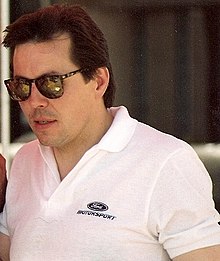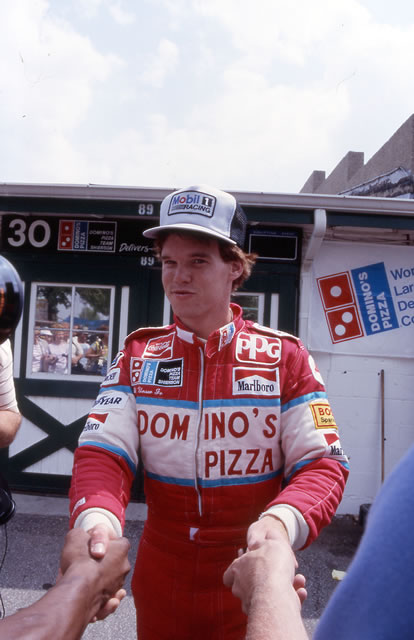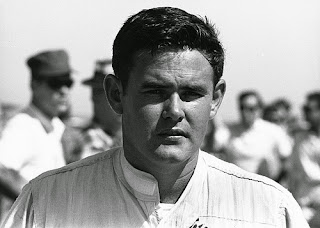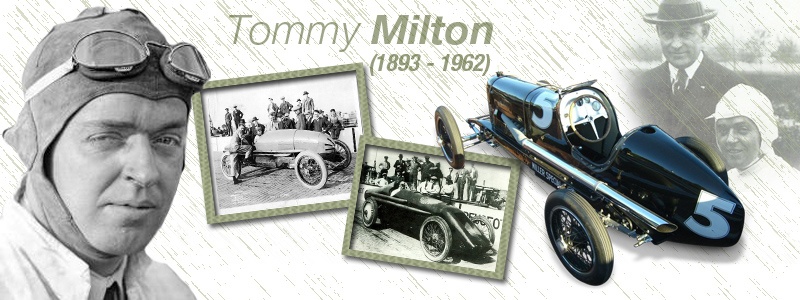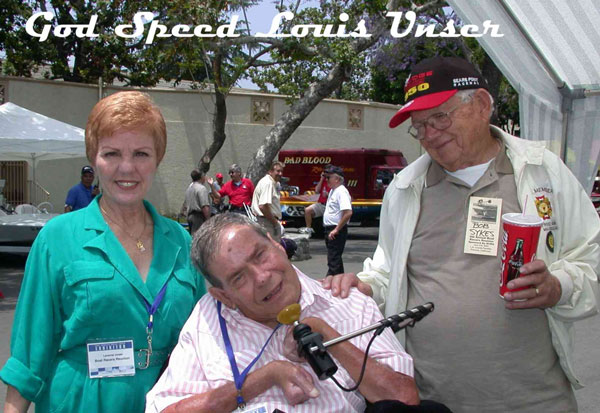November 11, 1967
Gil de Ferran
Born in Paris, France.
Inspired by the success of fellow Brazilian Emerson Fittipaldi, de Ferran began his career in kart racing in the early 1980s. He graduated to Formula Ford level in 1987 and Formula Three in 1991. Driving for Edenbridge Racing, De Ferran finished the 1991 British Formula Three season in third, only behind Rubens Barrichello and David Coulthard. For the 1992 season, De Ferran moved to Paul Stewart Racing and won the title, scoring seven wins in the process.
1993 and 1994 were spent driving for Paul Stewart Racing in International Formula 3000. De Ferran finished fourth in the series in 1993 and then took the championship down to the wire in 1994, ultimately finishing third.
At the end of 1994, de Ferran was invited to test a CART by Hall/VDS Racing. Despite the worries of the team's sponsor Pennzoil that de Ferran was not famous enough name for their car, the team was sufficiently impressed to offer de Ferran a drive for 1995. With no top-line Formula One drive available de Ferran took up the offer to drive in America.
De Ferran won the rookie of the year award in 1995 by finishing 14th. He scored his first CART win in the last race of the year at Laguna Seca Raceway.
In 1996, de Ferran was a consistent challenger but only scored one win, at Cleveland. This win was the last for veteran car owner and driver Jim Hall who retired from the sport at the end of 1996. Hall's retirement also spelled the end of the Pennzoil Hall team. Despite rumours that he would be a driver for the new Stewart Grand Prix Formula One team, de Ferran stayed in America for 1997, joining Walker Racing.
De Ferran finished 1997 as runner-up to Alex Zanardi with ten top-ten finishes but failed to score a single victory. He looked on course to win the season opener at Homestead but was knocked out of the lead by a lapped driver, Dennis Vitolo. At the Grand Prix of Portland he lost out to PacWest Racing's Mark Blundell in the closest finish in CART history.
The expected championship challenge never materialized in 1998. Unreliability, driver errors and the inferior performance of the Goodyear tires compared to the Firestone tires all combined to leave de Ferran 12th in the standings, again with no wins in the year.
In 1999 the breakthrough finally came as de Ferran beat Juan Pablo Montoya at Portland to take his first win since mid-1996 and the Walker team's first since early-1995. However that victory would be the end of an era as Goodyear and Valvoline both left CART racing at the end of 1999. Toward the end of that season, de Ferran and Greg Moore were signed to Marlboro Team Penske to replace Al Unser, Jr. and the rotating arrangement of drivers employed after Andre Ribeiro retired. However, Moore was killed in a crash in the season finale and de Ferran's fellow countryman Helio Castroneves joined him.
On October 28, 2000, during CART qualifying at Auto Club Speedway, de Ferran set the track record for fastest lap at 241.428 mph (388.541 km/h). As of November 11, 2014, this stands as the fastest lap speed ever recorded at an official race meeting.
The Penske years saw de Ferran finally fulfill the promise of his earlier career with two CART titles and an Indy 500 victory. His analytical approach earned him comparisons with Penske's first driver, Mark Donohue. He also garnered praise for his politeness and integrity: when Penske switched to the Indy Racing League in 2002, he did not criticize the move even though it meant he could not defend his Champ Car title.
Following his Indianapolis triumph de Ferran decided to retire at the end of 2003. He won his final race, although the moment was soured by a terrifying crash during the race that left fellow Indy winner Kenny Bräck seriously injured.
In 2005, he moved to the BAR-Honda Formula One team as their Sports Director. He resigned from this position in July 2007 after becoming "increasingly uncomfortable" with the team.
On January 29, 2008 de Ferran announced that he will return to the cockpit and field a factory backed LMP2 class Acura ARX-01b prototype in the American Le Mans Series, under the team name de Ferran Motorsports. The team began competing around the mid-way point of the 2008 season, with De Ferran running the team and sharing driving duties with Simon Pagenaud.
Success again was immediate and de Ferran Motorsports took four front row grid positions, led six races and scored three podium finishes in just eight starts.
2009 saw another challenge when de Ferran Motorsports was chosen by Honda to develop the Acura ARX-02 for competition in the LMP1 division of the American Le Mans Series. The team scored five outright wins, seven poles, seven fastest laps and finished runners up in the ALMS LMP1 Championship.
Half way through 2009 de Ferran announced his decision to retire from the cockpit at the end of the racing season, expressing his intention to concentrate all his resources on expanding his team, making public his desire to return to IndyCar racing as a front running team owner. Prior to the start of the 2010 IZOD IndyCar season, de Ferran merged his team with Luczo Dragon Racing, a team started by Jay Penske, the son of de Ferran’s former boss Roger Penske, and Steve Luczo, a successful technology leader and racing enthusiast. The new team was named de Ferran Dragon Racing and is the realization of de Ferran’s ambition to return to IndyCar.
De Ferran Dragon Racing, with driver Raphael Matos, earned four Top Ten finishes in its debut campaign and led 15 laps during the season finale at Homestead-Miami Speedway.
In 2010, IndyCar also began planning for a completely new car concept, to debut during the 2012 season. Due to his technical knowledge, motorsports experience across different series and roles, as well as the widespread respect he holds within the racing industry, de Ferran was chosen by his team owner peers to represent their interests in the development of the future IndyCar. As part of the ICONIC committee, who created the concept for the future of IndyCar Racing.
In 2011 de Ferran Dragon racing closed its doors due to lack of funding, having attempted to stay operational for the new season.
De Ferran currently lives in Fort Lauderdale, Florida with his English wife Angela and children Anna and Luke.
In July of 2013, Autosport magazine named De Ferran one of the 50 greatest drivers to have never raced in Formula One.


